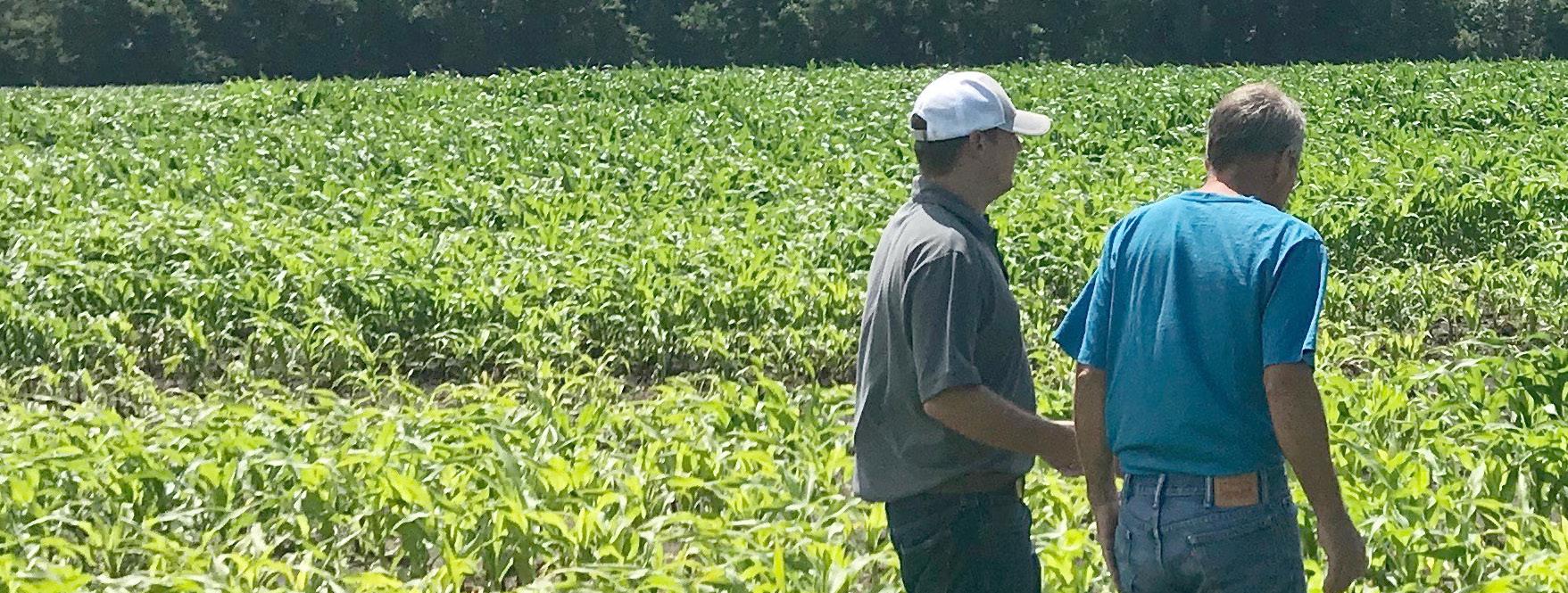
3 minute read
Studying Stabilizers
By: Kelli Schrag, MKC Communications Specialist
To side-dress or not to side-dress, that is the question. While it may not be as profound of a phrase as Shakespeare’s famous line, it is a common musing in farmer’s minds each year. Farmers face several options when it comes to addressing nitrogen loss, such as broadcasting urea, streaming UAN at a flat or variable rate, running UAN with drop hoses at flat or variable rates, or doing nothing at all.
Advertisement
Last spring, MKC Strategic Account Manager Mike Zacharias partnered with Burns-area farmer John Taylor to conduct the study “To Side-Dress or not to Side-Dress: A Study in Optimizing Profitability for Dryland Corn Using Various Management Practices,” using Taylor’s fields.
“Butler County was unseasonably wet during the spring of 2019,” Zacharias says. “Consequently, fields planted to corn sustained widely varied nitrogen losses. A combination of soil type, topography, fertilizer sources and management practices all played roles in what nitrogen still remained in the soil.”
Taylor had applied liquid nitrogen to his fields earlier in the season, but because of the large amount of rainfall, his fields were now nitrogen deficient.
“I knew I needed to do something,” Taylor says. “Things change on a year to year basis, but I’ve been in this position before and was open to trying something new.”
Zacharias used the unique year as an opportunity to experiment and get creative in studying various management practices. He first looked at how to determine which fields needed additional nitrogen and then how to identify specific nitrogen needs for a given field.
“Our plan was truly a joint effort between John and several MKC employees,” Zacharias says. “Our precision ag team utilized the Winfield United R7 tool and Bayer’s Climate platform to access a wide variety of satellite images and write variable rate side-dress scripts.”
Zacharias and Taylor scouted fields to compare what they saw on the ground with what they were seeing from satellite imagery. They went field by field, referencing historic yield performance with observations to create a targeted approach for each field.
“We spent a lot of time discussing what we wanted to do,” Taylor says. “Mike helped mesh together what we were seeing in the field and from the images to formulate a plan.”
The team decided to run with two strategies: flat rate stabilized UAN and variable rate UAN application with stabilizers, with the goal to gain additional bushels and earn a positive return on those acres.
“We did a lot of looking at the forecast and current conditions, and weighed which stabilizer was going to give him the most bang for his buck,” Zacharias says. “We were hoping to move the fields that we were applying variable rate UAN to a greater level of uniformity. Flat rate fields received 45 units of nitrogen. We used levels of 40, 50 and 70 units of nitrogen for variably applied fields.”
Applications were made June 19-21. The team then waited for harvest and captured yield data using Climate.
“There was a strong relationship with side dressing corn and receiving a positive yield response in a dryland environment,” Zacharias says. “Taking any action resulted in a 15-bushel positive response versus doing nothing at all. At $3.50 corn, this added $52.50 of revenue, less $31.75 in costs associated to the application, adding a total of $20.75 per acre to the bottom line. A VRT application in these instances resulted in an 18-bushel increase over doing nothing. At $3.50 corn, this added $63 of revenue, less costs of $44.15, which added $18.85 per acre to the bottom line.”
Taylor says while money isn’t everything, he found value in the increased yields, return on added investments and his partnership with Zacharias.
“You put your heart and soul in your crops,” Taylor says. “Part of the deal, other than thriving or surviving, is learning something, which I did. Having the technology available to make these changes was nice, as well as being able to call Mike with any sort of problem. He’s there when I need him.”
For Zacharias, the study’s results reinforced the value of protecting the investment in fertilizer through the use of nitrogen stabilizers.
“With nitrogen being the dominant nutrient needed to push yields, we must always focus on meeting the crop’s needs,” Zacharias says. “The overarching theme in our study was that sidedressing deficient corn will almost always result in a positive response. In fields that have sustained substantial losses, the additional application can be quite profitable to the bottom line and managing with varied rates can be an excellent way to maximize your return on investment.”
LEARN MORE: Ask your strategic account manager or nearest MKC location about nitrogen stabilizers.







